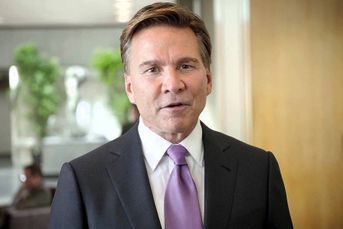Illiquid BDCs demand scrutiny
Along with potential for attractive yields, nontraded business development companies come with a number of risks that financial…
Along with potential for attractive yields, nontraded business development companies come with a number of risks that financial advisers need to understand fully before selling them to clients, according to regulators, analysts and industry participants.
Illiquid BDCs are an increasingly popular alternative investment for clients in need of income in a zero-interest-rate environment. They are sold almost exclusively through independent-contractor broker-dealers.
BDCs are typically closed-end investment companies that invest in debt and equity of private companies. Yields can be attractive due to BDCs’ exposure to high credit risks that is amplified by leverage, according to the Financial Industry Regulatory Authority Inc.
SENSITIVE TO ECONOMY
“The biggest issue [facing nontraded BDCs] is if we hit a rough patch in the economy,” said Tim Keating, chief executive of Keating Capital Inc., a publicly traded BDC that was listed in 2011 after six months of raising equity.
BDCs buy debt of companies that have junk or non-investment-grade credit ratings and thus are extremely sensitive to the overall strength of the economy, he said.
Questions that arise include the potential default rates on the loans, the risk of defaults and whether the loans are repaid to the lender in cash or in kind, meaning by issuing more securities, he said.
“This is not anything specific to the BDC vehicle,” Mr. Keating said. “That’s the underlying risk to the asset class. Do advisers and investors fully understand risks associated with non-investment-grade credit?”
BDC risks were highlighted by securities regulators and a leading analyst earlier this year. Illiquid BDCs have high expenses that can limit investor returns, as well as potentially lower expected returns based on lower yields, according to a report by Jonathan Bock, a senior analyst at Wells Fargo Securities LLC.
The historic returns of the companies — because they are relatively new — have been limited to net asset value plus dividend appreciation. That has limited an investors’ ability to buy company stock below NAV and experience appreciation, Mr. Bock noted. There also could be a sell-off in the stock of the company when it is listed and begins trading on an exchange, he wrote.
In January, Finra underscored the risks of nontraded BDCs in its annual list of regulatory and exam priorities. Those risks include a lack of liquidity, Finra noted. “Due to the illiquid nature of nontraded BDCs, investors’ exit opportunities may be limited only to periodic share repurchase by the BDC at high discounts,” Finra warned. It also highlighted BDCs’ market, credit and leverage risks.
In spite of the risks, the nontraded-BDC space is growing. From 2007 to the end of last year, nontraded BDCs raised roughly $3.4 billion in total equity, Mr. Bock reported. He counts seven such closed-end funds in operation: BDC of America, CION Investment Management, Corporate Capital Trust Inc., FS Investment Corp., FS Investment Corp. II, HMS Income Fund and the Sierra Income Corp.
One broad criticism of the products is that well-known managers of nontraded real estate investment trusts, such as CNL Financial Group Inc. and Hines, have brought BDC products to market while acting only as distributors. Those dealer-managers counter that the subadvisers of the BDCs are well-qualified to invest in the private-loan arena. For example, CNL’s nontraded BDC, Corporate Capital Trust, is subadvised by legendary private-equity manager KKR & Co. LP.
Indeed, investors in nontraded BDCs received some encouraging news this month. Over the next nine to 18 months — perhaps sooner — the first-to-market nontraded BDC, the $2.5 billion FS Investment Corp., plans to complete a “liquidity event,” signaling the return of capital to investors.
FS had an offering price of $10.80 per share and its NAV was $9.97 at the end of last year, according to a company filing with the Securities and Exchange Commission. It has returned $5.80 per share in distributions or dividends to shareholders who bought the BDC when it was launched in 2009. It stopped raising equity capital last year.
The liquidity event most likely will be a listing on a national securities exchange, FS chief executive Michael Forman told investors in a conference call this month. To increase yield and distribution before a listing, its portfolio will transition to higher-yielding investments, he said.
In his report, Mr. Bock also noted that nontraded BDCs have merits compared with traded BDCs.
One advantage is less fluctuation of the BDC’s value. “As a result of the offering price being a function of NAV, the nontraded-BDC model allows investors to see lower volatility in their investments,” he wrote.
Nontraded BDCs also have the ability to raise capital and invest at opportune times, Mr. Bock wrote. “The way a private BDC is structured, it is consistently able to raise capital in both good times and bad,” he wrote. “This eliminates the largest issue of public BDC capital-raising activities, which is that it is difficult to tap the equity market when spreads are widest.”
That ability to raise capital in a steady manner is a plus for nontraded BDCs, one industry executive said.
“A public BDC raises money in a big lump,” due to regulatory requirements, said Bob Grunewald, chief investment officer of BDC of America and a veteran of the traded BDC industry. “With nontraded BDCs, the quality of assets is potentially better because they are raising capital on a consistent basis.”
Learn more about reprints and licensing for this article.








